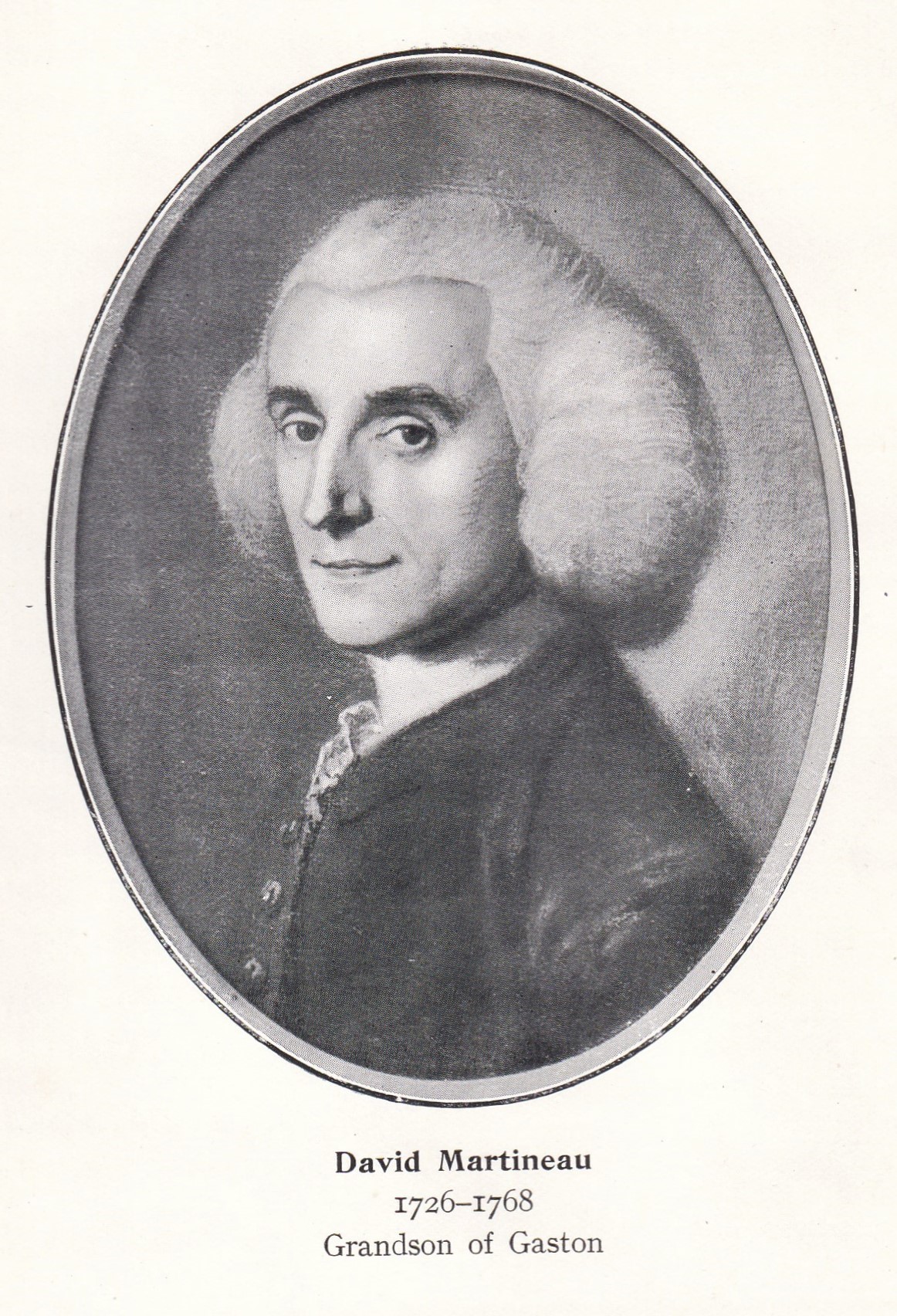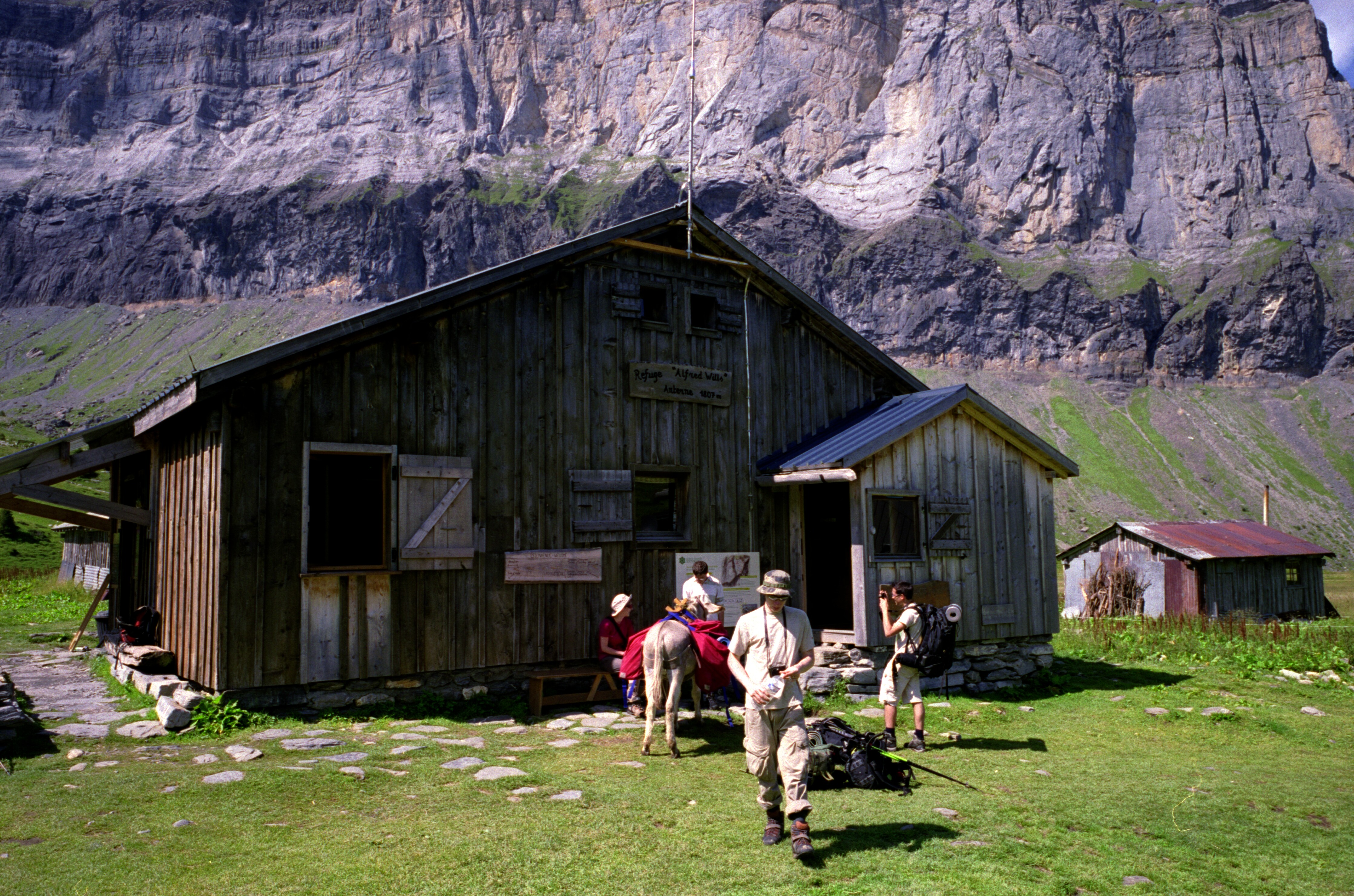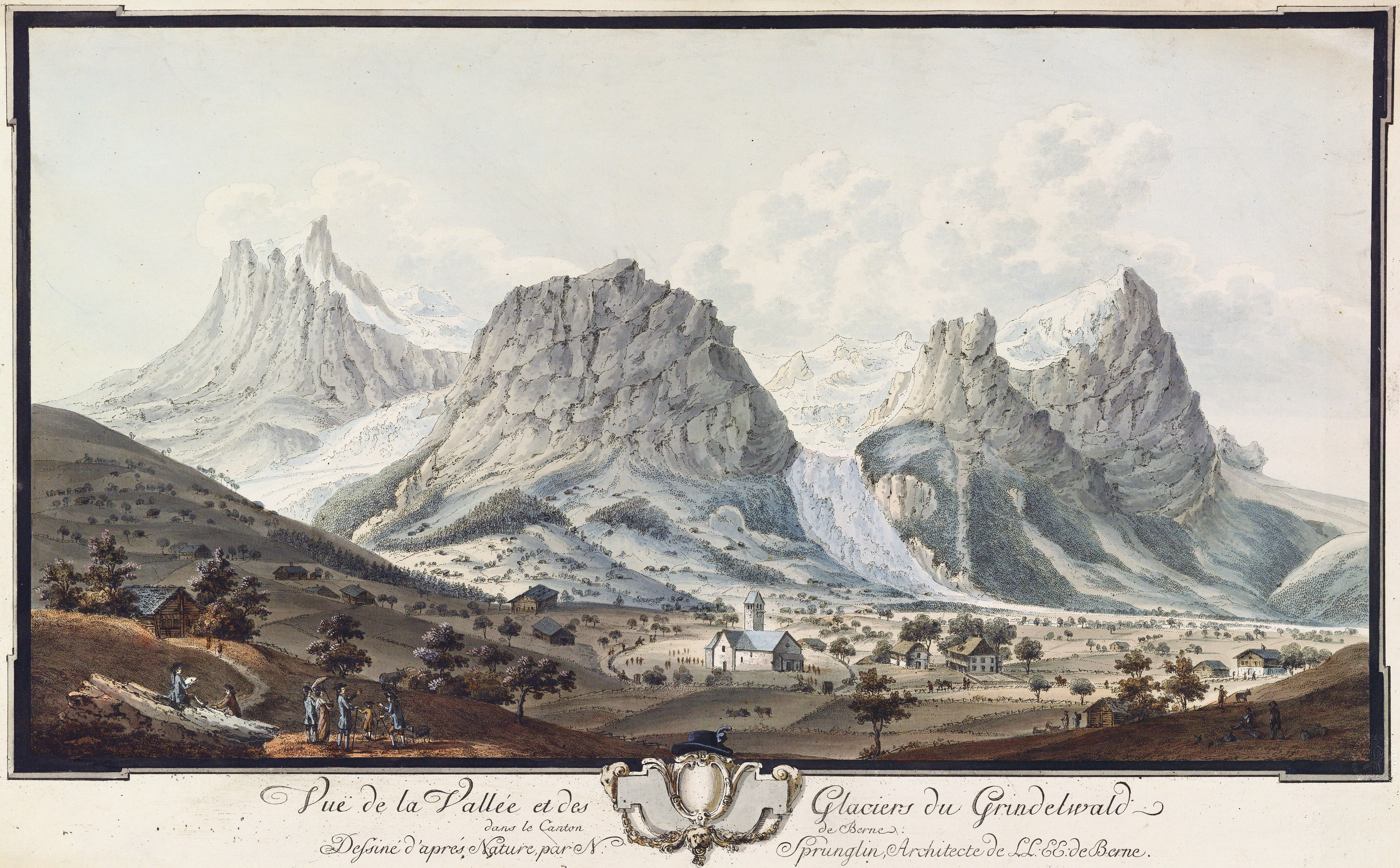|
Alfred Wills
Sir Alfred Wills (11 December 1828 – 9 August 1912) was a judge of the High Court of England and Wales and a well-known mountaineer. He was the third President of the Alpine Club, from 1863 to 1865. Early life Wills was the second son of William Wills, JP, of Edgbaston, Birmingham, and of his wife Sarah Wills, a daughter of Jeremiah Ridout. He was educated at King Edward's School, Birmingham and at University College London, where he held exhibitions and scholarships in Mathematics, Classics and Law, graduating BA in 1849 and LLB in 1851. Legal career Wills was called to the bar by the Middle Temple in 1851 and was appointed Queen's Counsel in 1872. He was first Recorder of Sheffield, 1881–84; a Judge of the Queen's and King's Bench Division of the High Court of Justice, 1884–1905, President of the Railway and Canal Commission, 1888–1893, and Treasurer of the Middle Temple, 1892–1893. During his career as a judge, his most notable act was presiding over the ... [...More Info...] [...Related Items...] OR: [Wikipedia] [Google] [Baidu] |
Oscar Wilde
Oscar Fingal O'Fflahertie Wills Wilde (16 October 185430 November 1900) was an Irish author, poet, and playwright. After writing in different literary styles throughout the 1880s, he became one of the most popular and influential playwrights in London in the early 1890s. Regarded by most commentators as the greatest playwright of the Victorian era, Wilde is best known for his 1890 Gothic fiction, Gothic philosophical fiction ''The Picture of Dorian Gray'', as well as his numerous epigrams and plays, and his criminal conviction for gross indecency for homosexual acts. Wilde's parents were Anglo-Irish intellectuals in Dublin. In his youth, Wilde learned to speak fluent French and German. At university, he read Literae Humaniores#Greats, Greats; he demonstrated himself to be an exceptional classicist, first at Trinity College Dublin, then at Magdalen College, Oxford. He became associated with the emerging philosophy of aestheticism, led by two of his tutors, Walter Pater and Jo ... [...More Info...] [...Related Items...] OR: [Wikipedia] [Google] [Baidu] |
Edward F
Edward is an English male name. It is derived from the Anglo-Saxon name ''Ēadweard'', composed of the elements '' ēad'' "wealth, fortunate; prosperous" and '' weard'' "guardian, protector”. History The name Edward was very popular in Anglo-Saxon England, but the rule of the Norman and Plantagenet dynasties had effectively ended its use amongst the upper classes. The popularity of the name was revived when Henry III named his firstborn son, the future Edward I, as part of his efforts to promote a cult around Edward the Confessor, for whom Henry had a deep admiration. Variant forms The name has been adopted in the Iberian peninsula since the 15th century, due to Edward, King of Portugal, whose mother was English. The Spanish/Portuguese forms of the name are Eduardo and Duarte. Other variant forms include French Édouard, Italian Edoardo and Odoardo, German, Dutch, Czech and Romanian Eduard and Scandinavian Edvard. Short forms include Ed, Eddy, Eddie, Ted, Teddy ... [...More Info...] [...Related Items...] OR: [Wikipedia] [Google] [Baidu] |
Norfolk
Norfolk ( ) is a Ceremonial counties of England, ceremonial county in England, located in East Anglia and officially part of the East of England region. It borders Lincolnshire and The Wash to the north-west, the North Sea to the north and east, Cambridgeshire to the west, and Suffolk to the south. The largest settlement is the city of Norwich. The county has an area of and a population of 859,400. It is largely rural with few large towns: after Norwich (147,895), the largest settlements are King's Lynn (42,800) in the north-west, Great Yarmouth (38,693) in the east, and Thetford (24,340) in the south. For local government purposes Norfolk is a non-metropolitan county with seven districts. The centre of Norfolk is gently undulating lowland. To the east are the Broads, a network of rivers and lakes which extend into Suffolk and which are protected by the Broads Authority, which give them a similar status to a National parks of England and Wales, national park. To the west the ... [...More Info...] [...Related Items...] OR: [Wikipedia] [Google] [Baidu] |
Starston
Starston is a small village and civil parish in Norfolk, England. It covers an area of and had a population of 321 in 123 households at the 2001 census, the population increasing to 331 at the 2011 Census. The Starston village sign features a wind pump that was used to transport water from the Beck River up to Starston Place, which was demolished during the early 1900s. The wind pump remained and was restored in 2010, and can be seen from the roadside. Between 1856 and 1866, it had its own railway station on the Waveney Valley Line before it was closed to passenger services through lack of usage. Freight and passenger through trains continued until the Beeching Axe in the 1960s. The village had a pub called "The Gate" until the 1950s. This was turned into a shop, which closed in 1984. The pub sign still exists and is owned by local residents. The village school closed in 1968. Most village children now attend schools in Harleston, about away. In 2010, Starston villager ... [...More Info...] [...Related Items...] OR: [Wikipedia] [Google] [Baidu] |
Corn Hall, Diss
The Corn Hall is a commercial building in St Nicholas Street, Diss, Norfolk, England. The structure, which is now used as an arts centre, is a Grade II listed building. History The building was commissioned by the lord of the manor, Thomas Lombe Taylor, whose seat was at Starston Place in Starston. He selected a site on the north side of St Nicholas Street. It was designed by a local architect, George Atkins, in the neoclassical style, built in ashlar stone at a cost of £10,000 and was completed in 1854. The design featured a symmetrical main frontage of three bays facing St Nicholas Street. The central bay featured a tetrastyle portico formed by four Ionic order columns supporting a modillioned pediment. Behind the portico, a doorway with an architrave and brackets supported a cornice. The outer bays were decorated by blind windows with window sills and brackets supporting pediments. Internally, the principal rooms were the main hall, which was long and wide, and a library ... [...More Info...] [...Related Items...] OR: [Wikipedia] [Google] [Baidu] |
Martineau Family
The Martineau family is an intellectual, business (banking, breweries, textile manufacturing) and political dynasty associated first with Norwich and later also London and Birmingham, England. Many members of the family have been knighted. Many family members were prominent Unitarianism, Unitarians; a room in London's Essex Hall, the headquarters building of the British Unitarians, was named after them. Martineau Place in Birmingham's central business district was named in their honour. Harriet Martineau (1802–1876), the sociologist and abolitionist, is the family's most celebrity, celebrated member. In Birmingham, several of its members have been List of mayors of Birmingham, Lord Mayor. They worshipped at the Church of the Messiah, Birmingham, Church of the Messiah. As Unitarian, they married into families of the same denomination, such as the Wilfred Byng Kenrick, Kenricks and the Joseph Chamberlain, Chamberlains, though Harriet eventually became an atheist in contras ... [...More Info...] [...Related Items...] OR: [Wikipedia] [Google] [Baidu] |
Refuge Alfred Wills
Refuge Alfred Wills is a mountain hut in the French Alps in Haute-Savoie. The current shelter, bearing the same name, was built in 1981. At in altitude, it is the site of the former pasture Anterne more commonly called "Cottages Anterne". It is surrounded by five private cottages. The shelter is named after Alfred Wills, a British mountaineer and judge of the High Court of England and Wales, he was also a passionate climber. He tackled many Alpine glaciers, wrote several books about his exploits, and became the third president of the Alpine Club, serving from 1863 to 1865. Arriving at Sixt-Fer-à-Cheval in 1850, Wills fell in love with the area and wanted to build a chalet. In 1859 construction began of what he named "Eagle's Nest", what the inhabitants later called "the Castle". During World War II World War II or the Second World War (1 September 1939 – 2 September 1945) was a World war, global conflict between two coalitions: the Allies of World War II, Allie ... [...More Info...] [...Related Items...] OR: [Wikipedia] [Google] [Baidu] |
Mountain Hut
A mountain hut is a building located at high elevation, in mountainous terrain, generally accessible only by foot, intended to provide food and shelter to mountaineering, mountaineers, climbing, climbers and Hiking, hikers. Mountain huts are usually operated by an Alpine Club or some organization dedicated to hiking or mountain recreation. They are known by many names, including alpine hut, mountain shelter, mountain refuge, mountain lodge, and mountain hostel. It may also be called a refuge hut, although these occur in lowland areas (e.g. lowland forests) too. Mountain huts can provide a range of services, starting with shelter and simple sleeping berths. Some, particularly in remote areas, are not staffed, but others have staff which prepare meals and drinks and can provide other services, including providing lectures and selling clothing and small items. Permanent staffing is not possible above the highest permanent human settlements, which are 5500m at the latitude of Everes ... [...More Info...] [...Related Items...] OR: [Wikipedia] [Google] [Baidu] |
Golden Age Of Alpinism
The golden age of alpinism was the decade in mountaineering between Alfred Wills's ascent of the Wetterhorn in 1854 and Edward Whymper's ascent of the Matterhorn in 1865, during which many major peaks in the Alps saw their first ascents. Prominent figures With its beginning slightly predating the formation of the Alpine Club in London in 1857, the golden age was dominated by British alpinists and their Swiss and French guides. Prominent figures of the period include Lord Francis Douglas, Paul Grohmann, Florence Crauford Grove, Charles Hudson, E. S. Kennedy, William Mathews, A. W. Moore, John Ball, Leslie Stephen, Francis Fox Tuckett, John Tyndall, Horace Walker and Edward Whymper. Well-known guides of the era include Christian Almer, Jakob Anderegg, Melchior Anderegg, Johann Joseph Bennen ( fr), Peter Bohren, Jean-Antoine Carrel, Michel Croz, Ulrich Kaufmann and Johannes Zumtaugwald. Lucy Walker, sister of Horace, attained some notable firsts during the period, in ... [...More Info...] [...Related Items...] OR: [Wikipedia] [Google] [Baidu] |
Bernes Alps
Bernes () is a commune in the Somme department in Hauts-de-France in northern France. Geography Bernes is situated on the junction of the D15 and D87 roads, some northwest of Saint-Quentin. Population See also *Communes of the Somme department The following is a list of the 771 communes of the Somme department of France. The communes cooperate in the following intercommunalities (as of 2025):Site dedicated to Bernes Places and People (English) Communes of Somme (department) {{Péronne-geo-stub ... [...More Info...] [...Related Items...] OR: [Wikipedia] [Google] [Baidu] |
Grindelwald
Grindelwald is a village and Municipalities of Switzerland, municipality in the Interlaken-Oberhasli (administrative district), Interlaken-Oberhasli administrative district in the Cantons of Switzerland, canton of Bern (canton), Berne. In addition to the village of Grindelwald, the municipality also includes the settlements of Alpiglen, Burglauenen, Grund, Itramen, Mühlebach, Schwendi, Tschingelberg and Wargistal. Grindelwald village is AMSL, above sea level. Mentioned for the first time in 1146, it has become an important tourist destination of both Switzerland and the Alps since the golden age of alpinism in the 19th century. It is overlooked by a section of the Bernese Alps from the Wetterhorn to the Eiger, which creates a natural barrier. Together with the adjacent valley of Lauterbrunnen, the valley of Grindelwald forms part of the Jungfrau Region of the Bernese Oberland, between Interlaken and the main crest of the Bernese Alps. Similarly to Lauterbrunnen, Grindelwald is ... [...More Info...] [...Related Items...] OR: [Wikipedia] [Google] [Baidu] |





